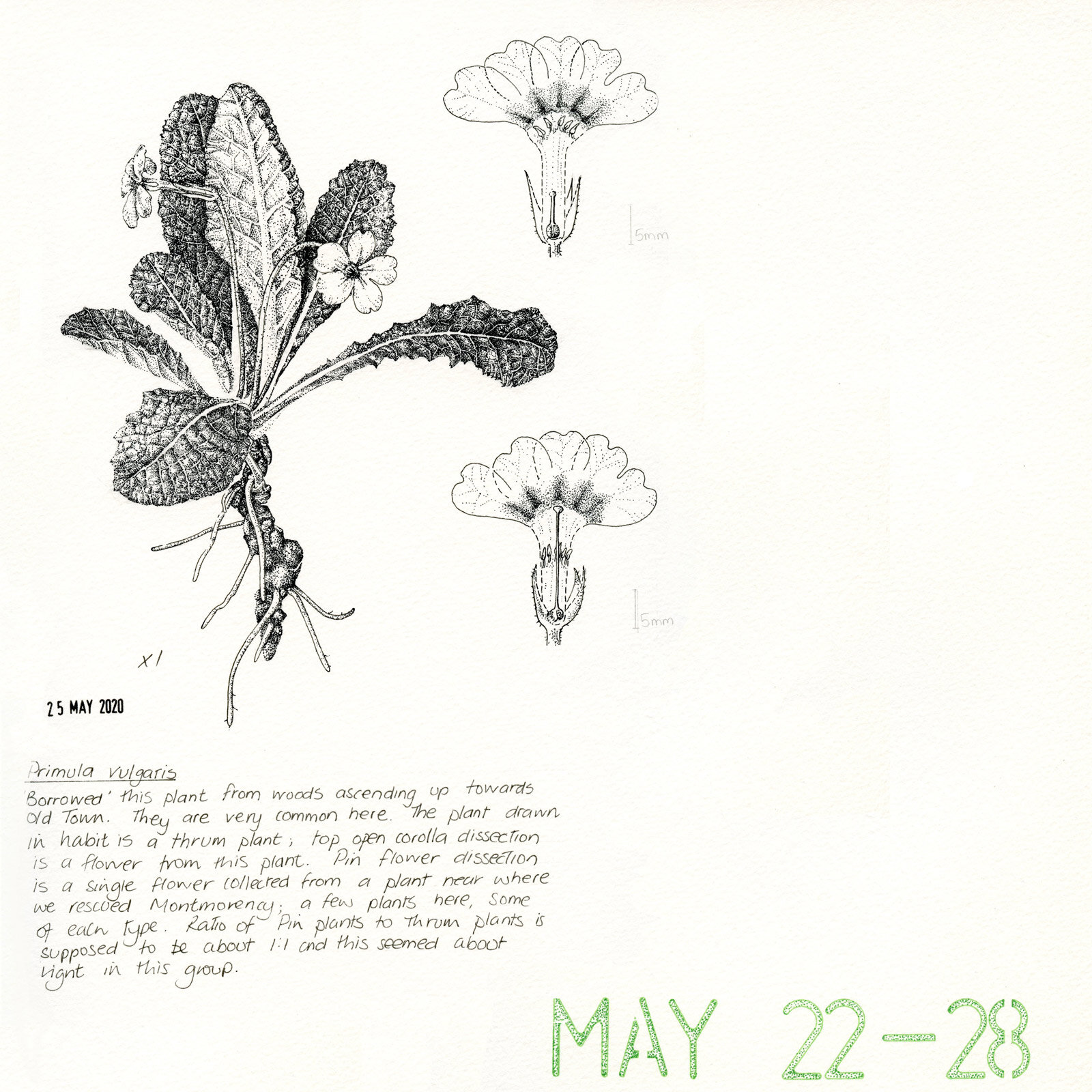I’m a scientist, and I love to draw. I’ve always been fascinated by nature, since I was very small, and I learned to love drawing when I wasn’t that much bigger. I studied Zoology at University. But I tend to call myself a ‘Biologist’ rather than a Zoologist now, because I spend a lot of time working with plants. When I was a student, I quickly worked out the best way to learn anatomy was to draw it, and I’ve been doing that ever since. I’ve always been more of a ‘lab person’ than a ‘field person’ – I like to collect things, bring them home, look at them under magnifiers, pull them apart, learn all about them and then draw them. My journals are mostly like lab books rather than field notes, and my subjects could all be described as found objects, found in nature.
I started a perpetual journal at the beginning of this year. Actually, it was supposed to start at the beginning of 2019, but I made a mistake. I bought a big, fancy, hardback leather-bound journal and when I came to start drawing in it, I had an attack of ‘blank page fear’ and didn’t want to spoil the journal. So, I put it away to wait for some better reason to use it in the future, and carried on journaling in scruffy little concertina sketchbooks I make with my favourite drawing paper (Lambeth Drawing Cartridge) and a couple of bits of cardboard from my paper recycling bin. Thinking about it, all my journals are recording something specific – a period in time, a particular plant, comparing plant features, planning a project, recording a trip… Although I like the idea of the perpetual journal – mark out the pages with dates through the year, and then add something on the pages every year, no pressure to draw on every page every year, and over a number of years everything comes together like magic – I didn’t really know quite what it was that I wanted to record in this big smart book. During the year, it came to me; I would use this book to record my observations of nature – plants and animals, close to home, in and around our garden, the river, woodland and open moors that are within walking and running distance. Bringing my finds home to investigate, but everything collected on foot.
Suddenly that big book was no longer daunting, and I didn’t need to worry about carrying it around outside – it’s a studio project. I go out, I find stuff that interests me, I look at it, and research it, and then I draw and write about it. As things turned out, I’ve spent a lot more time at home than I expected this year, holidays and trips all cancelled; I wander along my stretch of river most evenings, looking closely at plants, watching them change by the day or week. Always on the lookout for what I might take home with me from my runs – a bunch of Equisetum or Typha, and I’m keeping a close eye on that dead hare under a hedge until the skeleton is ready to come home - that will be such an amazing thing to investigate and draw. My work in this journal is often detailed, with dissections. It’s a place where I’m learning unexpected things about everyday plants… that the yellow bits in the middle of a forget-me-not are small scales in the mouth of the corolla, called fornices, that are typical in many plants in the Boraginaceae family; that those battered looking pussy willow catkins aren’t just wet, they are female flowers and they are on a separate tree because this is a dioecious plant; that the leaves on horsetails aren’t leaves at all, they are branches and the leaves are funny little scales – the only bit of the plant that doesn’t photosynthesise.
Another little project I’ve started in these strange times, purely by chance, is my pebble journal. On a very ordinary beach walk in a very ordinary day at the beginning of March this year with my husband, we picked up a little bagful of pretty pebbles, not for any reason other than they were pretty. Then lockdown happened. I kept looking at these pebbles, in a little pile on the table, and they reminded me of the sea. So, I started drawing them, in a little journal of their own that I made with a light grey textured paper. One at a time, front and back, like a formal leaf study. Superficially, they look pretty, but on close inspection they are fascinating, mesmerising almost. I can get lost in their detail and trying to recreate their colours and textures with my pencils. This is such an engaging and mindful process, where all I want to do is savour the experience of drawing these pretty little things that remind me of that day on the shore…I can almost smell the sea.
Find more of Alison’s work on her website alisoncutts.com, view her folio here, and on join here on Instagram @dr.alison_botanical_artist.










